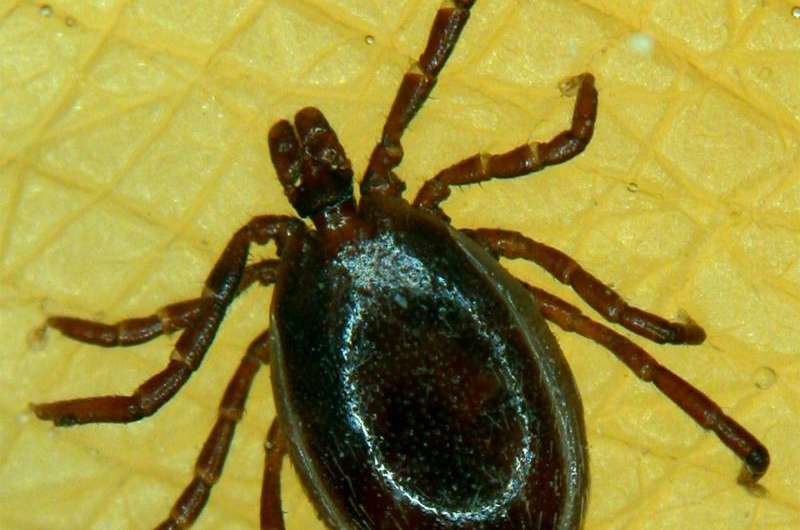Scientists examine how ticks cling to surfaces

Ticks spend more than 90 percent of their up to three-year-long life starving and clambering around in leaf litter and on vegetation. They walk remarkable distances while periodically exploring distal plant parts in order to prey on their victims. Once they get to humans and animals, the little parasites walk along skin and hairs, searching for suitable feeding sites.
How the bloodsuckers overcome the variety of substrates and manage to cling on to various surfaces is shown by a current study by Dr Dagmar Voigt (Technische Universität Dresden, Germany) and Professor Dr Stanislav Gorb (Kiel University, Germany).
160 years after a first note by Hermann Burmeister about the ticks' feet composition of paired, curved, tapered tarsal claws and between them a pad, the current morphological details and adhesion experiments led to new deductions on the function of ticks' feet. "The fact that not only the pad, but also the transparent claws contain the elastic protein resilin is surprising, because we have never observed resilin in arthropod claws before," said Dagmar Voigt from the Institute for Botany of Technische Universität Dresden. With these sticky pads, ticks are able to attach easily to smooth surfaces like human skin and glass. Depending on the situation and required power, the pads can be folded and unfolded – similar to an accordion. An adhesion-mediated fluid adds to the adhesion of the pad. While walking in litter or on contaminated surfaces, ticks frequently fold back their feet and run on their tarsal-tibial joint.
Males are rather small and access the host body for copulation purposes only. Thus, their feet are smaller and attach less than females. On glass, females generate forces corresponding to more than 500-fold of their own body weight in order to ensure their safety. During blood sucking, the female body weight can increase up to 135 times. Voigt and Gorb also showed that the attachment was worse on skin silicon replicas and on micro-rough resin surfaces. "As to attachment, ticks are almost generalists due to the combination of their soft adhesive pads and tapered claws; but not entirely. Our experiments clearly show, how a future technical surface, having anti-adhesive properties for ticks, could look like," summarised Stanislav Gorb from the Zoological Institute of Kiel University. Thus, ticks could be prevented from attaching to skin and hair.
More information: Dagmar Voigt et al. Functional morphology of tarsal adhesive pads and attachment ability in ticks(Arachnida, Acari, Ixodidae), The Journal of Experimental Biology (2017). DOI: 10.1242/jeb.152942
Journal information: Journal of Experimental Biology
Provided by Dresden University of Technology





















